.webp)
The sacred journey of Hajj, a cornerstone of Islam, is experiencing transformative shifts as it approaches 2025. This year, the pilgrimage is marked by sweeping new changes designed to enhance pilgrim safety, streamline logistics, and broaden accessibility, while also introducing stringent regulations for unauthorized individuals. For millions of Muslims worldwide, the prospect of undertaking Hajj 2025 is both an immense spiritual calling and a logistical puzzle, now with updated rules that demand careful attention. Understanding these new Hajj rules 2025 is paramount for a successful and accepted pilgrimage.
The Evolving Landscape of Hajj: Why New Rules Are Necessary
Hajj is one of the five pillars of Islam, an obligation for every Muslim who is physically and financially able to undertake it once in their lifetime. Annually, millions converge on Mecca, creating one of the largest human gatherings on Earth. While this convergence symbolizes unity and devotion, it also presents immense logistical and safety challenges. The Saudi Arabian government, as the custodian of the Two Holy Mosques, continually strives to improve the pilgrim experience.
The new Hajj rules 2025 are a direct response to lessons learned from previous years, particularly concerning crowd management, heat-related health issues, and the prevention of unauthorized pilgrimages. These sweeping new changes aim to ensure that Hajj 2025 is a safe, organized, and spiritually fulfilling journey for all legitimate pilgrims. The sheer scale of the operation necessitates continuous innovation and adaptation, making these new Hajj rules 2025 a critical development.
Key Drivers for the 2025 Reforms:
- Enhanced Safety: Past incidents, particularly those related to overcrowding and extreme heat, have underscored the urgent need for more robust safety protocols. The new Hajj rules 2025 directly address these concerns.
- Crowd Management: With an ever-increasing number of pilgrims, efficient crowd flow and dispersal are vital to prevent congestion and potential stampedes. The new Hajj rules 2025 implement stricter entry and movement controls.
- Preventing Unauthorized Pilgrimages: A significant challenge has been individuals performing Hajj without proper permits, leading to unregistered numbers, strain on services, and increased safety risks. The new Hajj rules 2025 aim to curb this practice decisively.
- Improving Pilgrim Experience: Beyond safety, the goal is to make the entire journey more comfortable and accessible, utilizing technology and new policies to facilitate a smoother experience for pilgrims. The new Hajj rules 2025 leverage digital platforms to achieve this.
- Equitable Access: Prioritizing first-time pilgrims is a key reform, ensuring that more Muslims have the opportunity to fulfill this religious obligation. This directly impacts who can perform Hajj 2025.
Navigating the Hajj Visa Policy 2025 and Entry Regulations
One of the most significant aspects of the sweeping new changes for Hajj 2025 concerns the Hajj Visa Policy 2025 and strict entry regulations into Mecca. The era of informal entry during Hajj season is definitively over, with severe penalties for non-compliance.
The Saudi authorities are enforcing a strict "No Hajj Without a Permit" policy. This means that only individuals holding official Hajj visas, valid Mecca residency, or authorized personnel permits will be allowed to enter Mecca during the H Hajj season. Other visa holders, including tourists and business visitors, are strictly prohibited from entering the holy city during this period.
Key Changes in Hajj Visa Policy 2025:
- Single-Entry Visas: For pilgrims from several countries, including India, Pakistan, Bangladesh, Egypt, Indonesia, Iraq, Nigeria, Jordan, Algeria, Sudan, Ethiopia, Tunisia, Morocco, and Yemen, only single-entry visas valid for a 30-day period will be issued. This is a direct measure to prevent individuals from entering the Kingdom on other visa types and then attempting to perform Hajj without authorization, a practice that previously contributed to overcrowding and safety issues. This shift in Hajj Visa Policy 2025 is a major deterrent for unauthorized pilgrims.
- No Umrah Visa During Hajj Season: The issuance of new Umrah permits through the Nusuk platform is suspended from late April to early June 2025 (specifically, April 29 to June 10, 2025), encompassing Saudi citizens, residents, GCC nationals, and other visa holders. This prevents Umrah pilgrims from overstaying and attempting Hajj. All Umrah visa holders must depart Saudi Arabia by April 29, 2025. This strict adherence to the Hajj Visa Policy 2025 is critical.
- Mandatory Hajj Permit: All pilgrims, whether international or domestic, must obtain a Hajj permit through official channels. For international pilgrims, this is typically part of their comprehensive Hajj 2025 package, while Saudi citizens and residents also require a dedicated Hajj permit. The Nusuk platform Hajj is the primary channel for managing these permits.
- Entry Restrictions for Residents: Starting April 23, 2025, even residents of Saudi Arabia will require a special entry permit to access Mecca unless they have a valid Hajj permit, official work authorization for the holy sites, or residency registered in Mecca. This reinforces the "permit-only" approach for Hajj 2025.
These strictures in the Hajj Visa Policy 2025 are not merely bureaucratic hurdles but vital components of the Kingdom's broader strategy to manage the immense logistical challenge of Hajj and safeguard the well-being of all pilgrims. The enforcement of these new Hajj rules 2025 is expected to be rigorous, with substantial fines and even deportation for violators.
The Nusuk Platform Hajj: Digitalization at the Forefront
A cornerstone of the sweeping new changes and the overall modernization of the pilgrimage experience is the Nusuk platform Hajj. This government-launched digital portal, operated by the Ministry of Hajj and Umrah, has become the central hub for managing the pilgrimage for many.
The Nusuk platform Hajj allows pilgrims from many countries to apply for their Saudi Hajj Visa and Hajj Permit, book flights and accommodation packages, make payments, and access essential information. For Saudi citizens and residents, direct application through the platform is available, provided they haven't performed Hajj in the last five years. International pilgrims from 122 serviced countries can also apply through the platform but must book their travel packages through one of the approved Saudi travel agencies.
Benefits of the Nusuk Platform Hajj:
- Streamlined Application Process: The Nusuk platform Hajj simplifies what was once a complex, paper-intensive application process.
- Centralized Booking: It allows for direct booking of accommodation and flights, offering more transparency and control over travel arrangements for Hajj 2025.
- Real-time Information: Pilgrims can receive updates and important notifications directly through the platform, ensuring they are aware of any new Hajj rules 2025 or operational changes.
- Payment Flexibility: For domestic pilgrims, the Nusuk platform Hajj facilitates flexible payment plans, such as installment options, making the pilgrimage more accessible financially. This addresses a significant concern regarding Hajj Costs 2025.
- Official and Secure Channel: Using the Nusuk platform Hajj helps pilgrims avoid fraudulent schemes and ensures they are dealing with officially recognized processes.
The ongoing evolution of the Nusuk platform Hajj demonstrates Saudi Arabia's commitment to leveraging technology for a more efficient and secure pilgrimage. This digital transformation is a significant part of the sweeping new changes for Hajj 2025.
Prioritizing First-Time Pilgrims and Quota Allocations
Among the most impactful of the new Hajj rules 2025 is the explicit prioritization of Hajj for first-time pilgrims. This policy aims to ensure that a wider segment of the global Muslim community gets the opportunity to fulfill this fundamental religious duty. Previously, repeat pilgrims from wealthier nations could more easily secure spots, sometimes at the expense of those who had been waiting for years.
This shift in focus is a significant move towards equity within the global Muslim community. Countries like Pakistan, for instance, have stated that their government quota allocation for Hajj 2025 will prioritize first-time pilgrims through a computerized balloting process.
Understanding Hajj Quota 2025:
- Country-Specific Allocations: Hajj Quota 2025 remains allocated based on each country's Muslim population. For example, Indonesia has a quota of 221,000, Pakistan 179,000, and India 175,025. These quotas are subject to adjustments based on negotiations between Saudi authorities and individual countries.
- Increases and Reductions: Some countries, like India, have seen their Hajj Quota 2025 increase after successful negotiations. Conversely, private Hajj quotas for some nations, such as Pakistan, faced reductions in certain instances due to missed deadlines by private operators, highlighting the importance of timely and compliant arrangements.
- Record Numbers Expected: Despite the various regulations, Hajj 2025 is anticipated to host a record number of pilgrims, projected to exceed 2.5 million from around the world. This is a significant increase compared to recent years and indicates the effectiveness of the expanded quotas and improved processing. Managing this surge in numbers underscores the necessity of all new Hajj rules 2025.
The management of Hajj Quota 2025 alongside the prioritization of Hajj for first-time pilgrims represents a conscious effort to make the pilgrimage more accessible and fair, reflecting the spiritual ideal of equality during Hajj.
Safety First: Hajj Safety Measures and Health Precautions for 2025
The extreme heat experienced during Hajj seasons, combined with the immense crowds, poses significant health and safety risks. The new Hajj rules 2025 place a strong emphasis on Hajj Safety Measures and proactive health precautions to mitigate these dangers. This is perhaps the most critical aspect of the sweeping new changes.
Last year, tragically, over 1,300 deaths occurred during Hajj, primarily due to extreme heat and overcrowding, with many being unregistered pilgrims who lacked access to facilities. These incidents have propelled the Saudi authorities to implement stricter Hajj Safety Measures for Hajj 2025.
Key Hajj Safety Measures for 2025:
- Children Banned Hajj 2025: A significant and somewhat controversial change is the prohibition of children under 12 years old from participating in Hajj 2025. This rule is explicitly aimed at protecting young ones from the dangers associated with large crowds and extreme heat. While traditionally families might travel together, this specific new Hajj rule 2025 prioritizes child safety above all else. This means if you are planning to perform Hajj 2025 with family, ensure no children under 12 are included.
- Heat Mitigation Strategies: With temperatures expected to reach 45°C or higher, extensive measures are being taken:
- Expanded Shaded Areas: An additional 50,000 square meters of shaded areas are being provided.
- Cooling Units: Over 400 cooling units are being deployed across the holy sites.
- Hydration Stations: Thousands of additional hydration stations will be available.
- Medical Personnel: More medics are on standby to respond to heat-related illnesses.
- Advisories: Pilgrims are strongly advised to stay hydrated, protect themselves from the sun (umbrellas, light clothing), and rest frequently. This proactive advice is central to Hajj Safety Measures.
- AI-Powered Crowd Control: For the first time, AI-powered drones, including the "Saqr" (Falcon) drone with thermal imaging, are being deployed to monitor pilgrim movements in real-time. These drones can identify and intercept unauthorized pilgrims, supporting the "No Hajj Without a Permit" campaign and enhancing overall Hajj Safety Measures.
- Stricter Penalties for Unauthorized Entry: The Saudi Interior Ministry has warned of substantial fines (up to $5,330 or 20,000 riyals) for attempting to enter Mecca without a proper visa or permit during Hajj season. These penalties are a direct outcome of the issues faced in previous years and are critical to ensuring Hajj Safety Measures are effective.
- Comprehensive Safety Guides: Saudi authorities have issued detailed safety guides in multiple languages, offering advice on physical preparation, managing heat, hygiene, and navigating crowds. These guides are an essential component of Hajj Safety Measures.
- Mandatory Vaccinations: Vaccination against Meningococcal Meningitis is mandatory for all pilgrims. Depending on origin and medical history, additional vaccinations for yellow fever, polio, and influenza may also be required. This is a fundamental aspect of Hajj Safety Measures.
These stringent Hajj Safety Measures are a testament to Saudi Arabia's commitment to protecting the lives and well-being of all pilgrims. The integration of technology and strict enforcement of the new Hajj rules 2025 underscore a proactive approach to pilgrim welfare.
The Question of Hajj Costs 2025 and Financial Accessibility
The financial aspect of the pilgrimage is always a significant consideration for potential pilgrims. The Hajj Costs 2025 vary widely, influenced by numerous factors, and for many, it remains a substantial investment.
The cost of Hajj can range from $4,000 to $20,000, depending on the country of origin, the type of package chosen, and the level of amenities desired. These Hajj Costs 2025 can be a barrier for many, leading some countries and the Saudi government to introduce measures to make it more affordable.
Factors Influencing Hajj Costs 2025:
- Package Type:
- Government Schemes: Many countries offer government-subsidized or managed Hajj schemes, which typically have lower Hajj Costs 2025. For example, Pakistan's government scheme starts around PKR 1,050,000 (approx. $3,700 USD).
- Private Packages: Private tour operators offer a range of packages, from standard to premium/luxury, with Hajj Costs 2025 varying accordingly. Premium packages often include closer hotel proximity to the Haram, better transportation, and more amenities.
- Accommodation: The standard and proximity of hotels in Mecca and Medina significantly impact Hajj Costs 2025. 5-star hotels near the Grand Mosque will be considerably more expensive than 3-star options further away.
- Flights: Direct flights are usually more expensive than connecting flights. The airline and class of travel also affect the overall Hajj Costs 2025.
- Duration of Stay: Longer pilgrimage durations typically increase Hajj Costs 2025 due to extended accommodation and other expenses.
- Inclusions: Some packages might include additional services like pre-Hajj seminars, guided tours, specific meal plans, or extra ground support, all of which contribute to the total Hajj Costs 2025.
Measures to Address Hajj Costs 2025:
- Flexible Payment Plans: Saudi Arabia has introduced flexible payment options for domestic pilgrims, allowing payments in installments (e.g., a 20% deposit followed by two 40% payments). Pakistan has also debuted a similar flexible payment system for its citizens. This helps ease the financial burden of Hajj Costs 2025.
- Subsidies and Assistance: Governments in various Muslim countries may provide subsidies or financial assistance to make Hajj more accessible for their citizens.
- Comparison and Planning: Pilgrims are advised to compare different packages and plan well in advance to secure better deals and manage their Hajj Costs 2025 effectively.
While the Hajj Costs 2025 remain substantial, the efforts to introduce payment flexibility and prioritize first-timers are positive steps towards making the pilgrimage attainable for more individuals.
The Empowering Step: Women Hajj Without Mahram 2025
A truly groundbreaking development, though introduced in recent years and applicable for Hajj 2025, is the explicit permission for Women Hajj Without Mahram 2025. This reform is one of the most significant sweeping new changes for women pilgrims, empowering them to undertake the pilgrimage independently.
Historically, Islamic jurisprudence has often required women to travel with a mahram (a male guardian, typically a husband, father, brother, or son) for long journeys, including Hajj. However, the Saudi Ministry of Hajj and Umrah has now lifted this requirement, allowing women aged 18 and above to perform Hajj without a mahram, provided they are part of an organized group. This monumental decision reflects an evolving understanding of Islamic teachings in modern contexts and a commitment to inclusivity.
Implications of Women Hajj Without Mahram 2025:
- Increased Participation: This change is expected to lead to a significant increase in the number of women performing Hajj, fulfilling a long-held aspiration for many who previously couldn't due to the mahram requirement.
- Empowerment: It offers women greater independence and control over their spiritual journey, fostering a deeper personal connection with their faith.
- Specialized Packages: Travel agencies are now offering specialized Hajj packages designed exclusively for women, often including female guides and chaperones, secure female-only accommodation, and dedicated transportation to ensure their safety and comfort during Women Hajj Without Mahram 2025.
- Safety Protocols: While the mahram requirement is lifted, stringent safety protocols remain in place. Women are encouraged to travel in organized groups and adhere to all safety guidelines.
The permission for Women Hajj Without Mahram 2025 is a profound demonstration of the sweeping new changes aimed at making Hajj more accessible and spiritually enriching for all segments of the Muslim community, recognizing the agency and spiritual autonomy of women.
Preparing for Hajj 2025: Practical Advice for Pilgrims
With the sweeping new changes and the proximity of Hajj 2025 (expected to begin on June 4, 2025), comprehensive preparation is more critical than ever. This pilgrimage is not just a spiritual endeavor but also a physically demanding and logistically complex journey.
Essential Preparation Steps for Hajj 2025:
- Spiritual Preparation: Begin with sincere intentions (niyyah). Deepen your knowledge of Hajj rituals, their significance, and the proper way to perform them. Seek forgiveness, strengthen your relationship with Allah, and mentally prepare for the spiritual intensity.
- Physical Fitness: Hajj involves extensive walking, sometimes under extreme heat. Start a physical fitness regimen well in advance. Incorporate daily walks, stair climbing, and light aerobic exercises to build stamina. Hydration and sun protection are paramount for Hajj 2025.
- Financial Planning: Understand the full Hajj Costs 2025 and budget accordingly. Utilize any available payment plans or financial assistance programs.
- Documentation and Visa:
- Ensure your passport is valid for at least six months beyond your entry date into Saudi Arabia.
- Work closely with your authorized Hajj operator or the Nusuk platform Hajj to secure your Hajj visa and permit. Be aware of the Hajj Visa Policy 2025 and its implications for your country of origin.
- Confirm your Hajj Quota 2025 status if applicable, especially for Hajj for first-time pilgrims.
- Health Requirements: Obtain all mandatory vaccinations, particularly Meningococcal Meningitis. Consult your doctor about any additional recommended vaccinations or necessary precautions for your health conditions. Carry essential medications with prescriptions.
- Packing Essentials:
- Ihram clothing: Two white, unstitched sheets for men; modest regular clothing for women.
- Comfortable Footwear: Essential for extensive walking. Break in new shoes beforehand.
- Sun Protection: Umbrella, wide-brimmed hat, sunglasses, high-SPF sunscreen.
- Personal Hygiene Items: Soap, shampoo, toothbrush, towel, etc. (ensure they are unscented for Ihram).
- Basic Medical Kit: Painkillers, plasters, antiseptic wipes, rehydration salts.
- Identification and Documents: Keep copies of your passport, visa, and Hajj permit in multiple locations.
- Small backpack/pouch: For carrying essentials during rituals.
- Communication: Inform your family of your travel plans. Consider a local SIM card or international roaming for communication. Download official Hajj mobile apps for guidance and information.
- Understanding New Rules: Pay close attention to all new Hajj rules 2025, particularly regarding "No Hajj Without a Permit," restrictions on children, and the Hajj Safety Measures. Adherence to these regulations is crucial for a trouble-free pilgrimage.
The Impact and Implications of the Sweeping New Changes
The sweeping new changes introduced for Hajj 2025 carry profound implications not only for the pilgrims but for the entire ecosystem surrounding the pilgrimage.
Positive Implications:
- Enhanced Safety and Well-being: The primary goal of these reforms is to safeguard lives. Stricter entry controls, improved crowd management, and comprehensive health measures will undoubtedly make Hajj safer.
- Improved Efficiency: Digital platforms like Nusuk platform Hajj and streamlined processes are reducing administrative burdens and making the pilgrimage more efficient for both pilgrims and organizers.
- Greater Equity: Prioritizing Hajj for first-time pilgrims and enabling Women Hajj Without Mahram 2025 are significant steps towards making the spiritual journey accessible to a broader and more diverse group of Muslims globally.
- Deterrence of Illegal Pilgrimages: The strict Hajj Visa Policy 2025 and heavy penalties are expected to drastically reduce the number of unauthorized pilgrims, thereby alleviating pressure on infrastructure and resources.
Challenges and Considerations:
- Adaptation Period: Pilgrims and Hajj operators will need time to fully adapt to all the new Hajj rules 2025. Clear communication and support from authorities are vital.
- Financial Strain (for some): While payment plans are offered, the overall Hajj Costs 2025 remain high, and some pilgrims might find it challenging to meet the expenses, especially those from lower-income brackets.
- Traditional Perspectives: The "Children Banned Hajj 2025" rule, while safety-driven, might challenge long-held traditions of families traveling together.
- Technological Literacy: While Nusuk platform Hajj offers convenience, some pilgrims, particularly the elderly or those in remote areas, might face challenges with online applications.
- Enforcement Consistency: The effectiveness of these sweeping new changes hinges on consistent and fair enforcement across all checkpoints and processes.
In conclusion, Hajj 2025 stands at a pivotal moment, ushering in an era of unprecedented organization and safety. The sweeping new changes, encompassing the Hajj Visa Policy 2025, the ubiquitous Nusuk platform Hajj, robust Hajj Safety Measures (including the "Children Banned Hajj 2025" rule), managed Hajj Quota 2025, and renewed focus on Hajj for first-time pilgrims and Women Hajj Without Mahram 2025, collectively underscore a commitment to a better pilgrim experience. While challenges remain, the overarching goal is to facilitate a journey that is not only spiritually profound but also physically secure and logistically seamless. Pilgrims are urged to embrace these updates with an open mind, prepare diligently, and look forward to a blessed and accepted Hajj.
;More Travel News
-
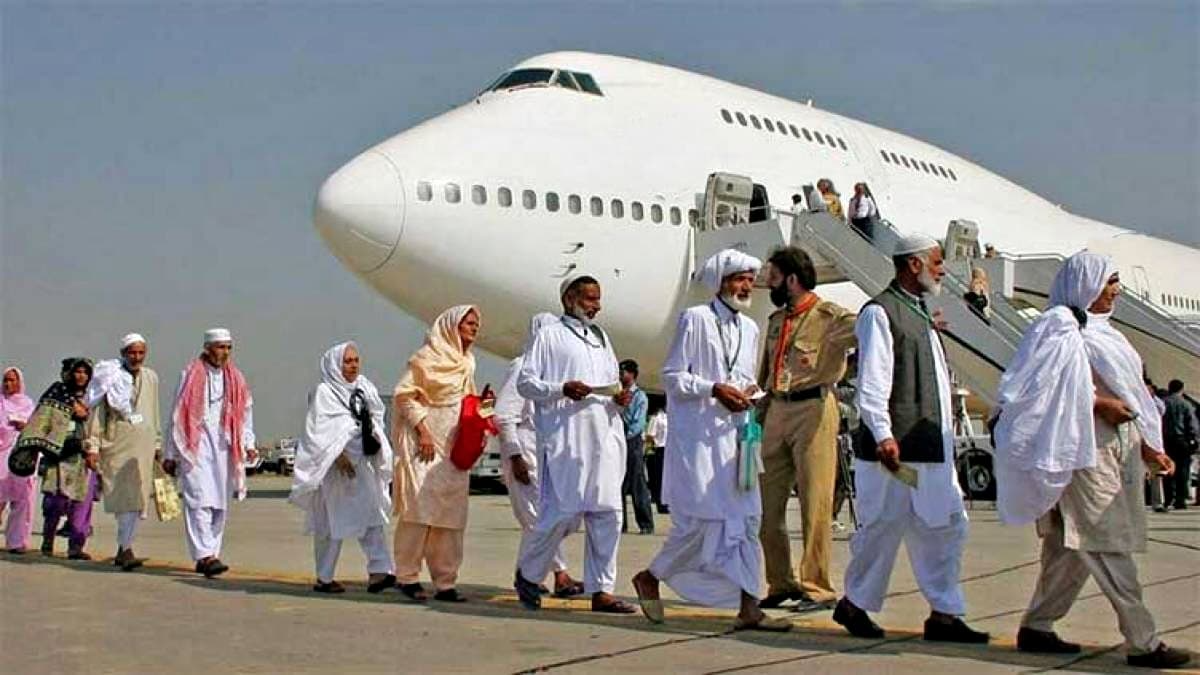 12-Mar-2025Flight & Hotel Prices Surge for Ramzan 2025 Umrah – Book Early to Save
12-Mar-2025Flight & Hotel Prices Surge for Ramzan 2025 Umrah – Book Early to Save -
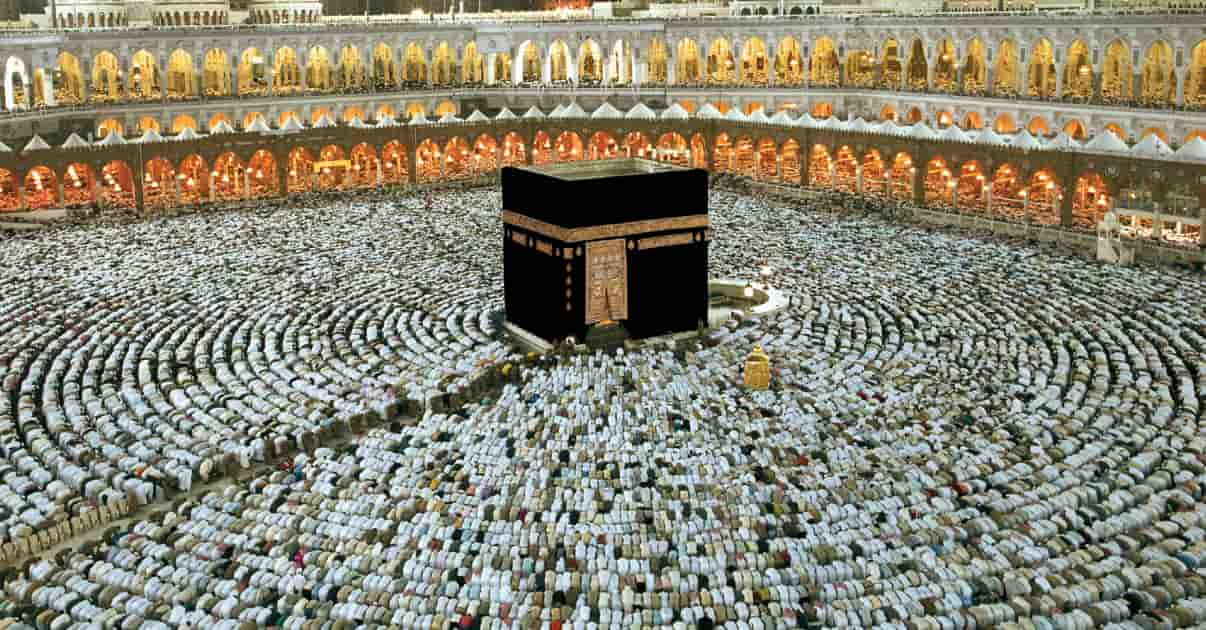 11-Mar-2025Affordable Umrah Trips: 15-Day Packages with Exclusive Discounts
11-Mar-2025Affordable Umrah Trips: 15-Day Packages with Exclusive Discounts -
 05-Aug-2024PIA Starts Direct Flights To Jeddah from Faisalabad To Facilitate Pilgrims
05-Aug-2024PIA Starts Direct Flights To Jeddah from Faisalabad To Facilitate Pilgrims -
 31-Mar-2020Coronavirus Seems Unbeatable As Cases Rise to 1,865 in Pakistan
31-Mar-2020Coronavirus Seems Unbeatable As Cases Rise to 1,865 in Pakistan -
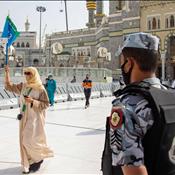 14-Jun-2022Saudi Arabia Removes All Restrictions Of Covid Ahead of Hajj
14-Jun-2022Saudi Arabia Removes All Restrictions Of Covid Ahead of Hajj -
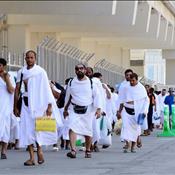 07-Nov-2019Can we wear shoes during Umrah
07-Nov-2019Can we wear shoes during Umrah -
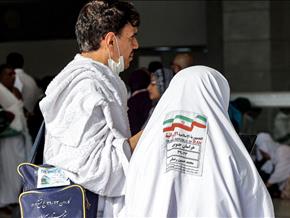 25-Sep-2024Iran has Resumed Traveling to Saudi Arabia for the Umrah Pilgrims
25-Sep-2024Iran has Resumed Traveling to Saudi Arabia for the Umrah Pilgrims -
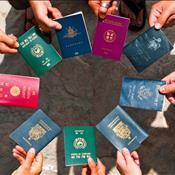 26-Apr-2021Top 5 Most Powerful Passports In The World
26-Apr-2021Top 5 Most Powerful Passports In The World -
.png) 06-Oct-2025Major Expansion of Umrah Access: All Visa Types Now Eligible 🕋
06-Oct-2025Major Expansion of Umrah Access: All Visa Types Now Eligible 🕋 -
 25-Aug-2020Top Reasons That Fascinate The Tourists To Visit Pakistan
25-Aug-2020Top Reasons That Fascinate The Tourists To Visit Pakistan -
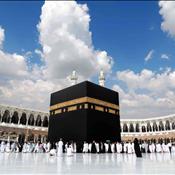 24-Dec-2019The Rumors against Saudi Arabia Multiple Visa Has Declared By Embassy
24-Dec-2019The Rumors against Saudi Arabia Multiple Visa Has Declared By Embassy -
 22-Jun-2020Dubai Government Announces Resumption of Tourism From July 7th
22-Jun-2020Dubai Government Announces Resumption of Tourism From July 7th
